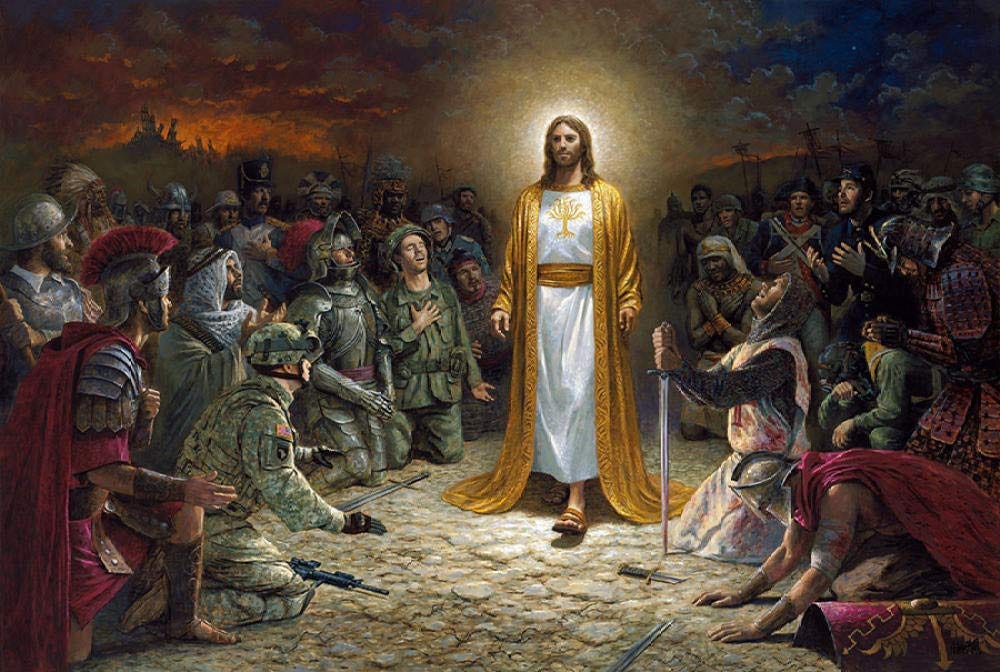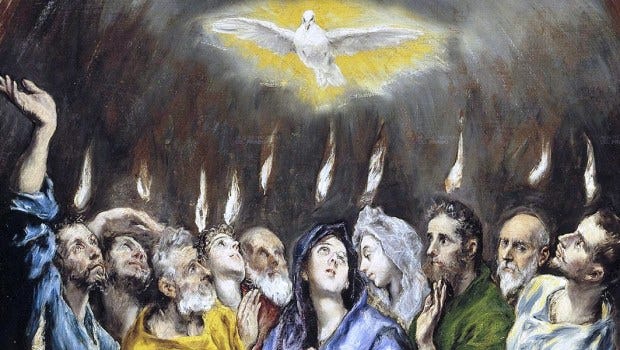In many Christian mystical traditions, especially those influenced by the contemplative and apophatic traditions, the true self is realized when one transcends the ego. The ego is often seen as the false self, the constructed identity that is attached to worldly desires, societal expectations, and even religious doctrines that serve to divide rather than unite. The “emptiness” and the dropping of this egoic self actually represents the moment when one experiences the oneness of the divine, as Christ himself spoke about in the Gospel of John: "I and the Father are one" (John 10:30). To transcend the ego is to return to the true self in God, not the false self that is attached to worldly perceptions.
Spiritual Peril of Clinging to False Identities
Those who are still attached to their egoic identities, whether through societal labels, religious roles, or even dogmatic religious beliefs, might be the ones who are in spiritual peril not because they follow a certain path, but because they cling to false identities that keep them from the true experience of union with God. The concept of the false self in Christianity echoes the idea of demonic deception, where spiritual forces (whether seen as the work of demons or as human-created distractions) keep individuals locked in a cycle of separation from God.
The Importance of the I AM
It is those who cling tightly to religious doctrines or rigid conceptions of self and God that are more susceptible to spiritual deception, because their attachment to their own sense of identity and religious "correctness" prevents them from encountering the deeper, more profound union with God that transcends any conceptualization of self. This is why the I AM of God (as revealed to Moses in the burning bush) is so central: it is not attached to form, not confined to an identity, not rooted in a set of rules, it simply is, and it invites others to simply be in union with that presence.
One by letting go of personal ego and societal expectations, is actually expressing the unity that exists in Christ. The belief that there is no separation between the individual and the divine, that true identity is not bound by labels, structures, or religious identities. Many Christians believe that the ultimate goal of the spiritual path is to be united with Christ, to lose the self and gain Christ, and this unity with the divine transcends all conceptualization of identity, ego, or worldly norms. That is why those who “die” gain life, and those who cling to life are “dead”.
The Spiritual Danger of Attachment to Dogma
Those who cling to rigid structures of identity, particularly in a religious context, may be in spiritual danger because their attachment to the false self blinds them to the truth of their own divine essence. They might believe their righteousness, their adherence to dogma, or their societal roles define them, when in fact it is the letting go of these attachments that leads them to the true self in Christ. This is exactly why Jesus said, “I am the way and the truth and the life. ... No one comes to the Father except through me”. As his path, is indeed the path of how it is done. Meaning his life’s journey itself is the example and the way. Not in a literal sense, but in a symbolic and spiritual way. This idea also is not new at all. The mystery schools, and various mystical traditions similarly talked about this. Yet often it is easy to get all caught up in roles and narratives. Where people lose the understanding of what all of it really points to. What it really all is about. As the ego decorates itself with it.
The Role of Ego in Spiritual Deception
From a Jungian or mystical Christian perspective, demonic forces can be seen as manifestations of the unconscious, as projections of the unresolved and repressed aspects of the psyche, or as the forces that keep us locked into patterns of dualistic thinking (e.g., good vs. evil, us vs. them). These forces, which many would associate with the concept of Satan or demonic influence, might manifest as the very ego itself: the false identity that keeps one trapped in separation, in fear, in self-centeredness, and in illusion.
Jesus as a Threat to Egoic Order
In the case of Jesus, some others saw him as a threat to their established order, and as a result, they projected all their fears, insecurities, and misunderstandings onto him. Instead of seeing Jesus as the embodiment of divine truth, one who was not attached to any earthly identity, not bound by the laws and rituals they clung to they saw him as someone who was out of control, and therefore, as possessed or influenced by evil forces. This is a classic case of projection, where they, unable or unwilling to confront the spiritual freedom and authenticity that Jesus represented, projected their own fears and judgments onto him. In this light, Jesus' actions, his disregard for certain societal rules, his profound connection to God, and his ability to speak and act with freedom were so alien to their understanding of spiritual law and order that they could only interpret him as demonically influenced.
In response, Jesus ties them to Satan. In a deeper, symbolic sense, this is a criticism not only of rigid religious systems but also of the egoic attachment to identity and control. In calling them this, Jesus is pointing to how their egoic identity and attachment to external forms of worship and rules have become an idol. They are not following the true spirit of God but rather adhering to a false system that keeps them in separation from the divine truth. In a way, their worship of the “law” over the heart of the law over God's true nature, which is love, compassion, and unity, has made them servants of the ego and not of God. This mirrors the idea of Azazel as a figure who represents the scapegoating mechanism in religious and psychological systems: those who cling to outward, rigid structures and point to external "evil" in order to avoid confronting their own inner darkness or failings. They were not following God’s true will, but were instead following a version of religion that has been distorted by their own fear, control, and need for power.
The Scapegoat Mechanism: Projecting Collective Guilt
In the ancient Jewish tradition, Azazel is sometimes considered a scapegoat, a symbolic figure to whom the sins of the people are transferred, and who is cast into the wilderness, carrying away the impurities of the community. In this sense, the scapegoat mechanism is a projection of the collective guilt of a group. Rather than confronting their own darkness, the community projects it onto a singular figure or force, effectively externalizing their inner turmoil. In the context of Jesus, this dynamic was mirrored. Others projected their spiritual blindness, their fear of the unknown, and their attachment to the ego onto Jesus, seeing him as the source of their discomfort and fear. In doing so, they fail to confront their own shadows and instead cast Jesus as the demonic other, the Azazel figure that must be rejected.
The Divine Truth Beyond Identity and Societal Norms
Ultimately, the spiritual truth that is being pointed to here, in the story of Jesus, is that the true nature of the divine is not to be found in rigid identity or societal norms. It is found in emptiness, freedom, in pure being that transcends all forms and projections. Those who are bound by ego (whether through societal expectations, religious identities, or personal constructs) are, in a sense, spiritually deceived because they are still locked in the illusion of separation. They may worship the letter of the law, or hold onto religious forms, but are not in touch with the living spirit of God, which is something that transcends all identity.







